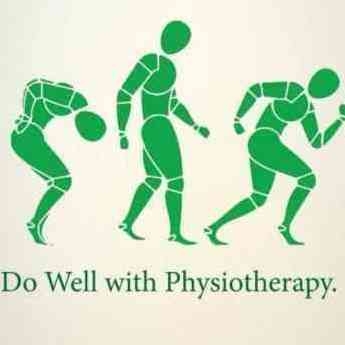+918042754929

This is your website preview.
Currently it only shows your basic business info. Start adding relevant business details such as description, images and products or services to gain your customers attention by using Boost 360 android app / iOS App / web portal.
Amyotrophic Lateral Sclerosis (Lou Gehrig's Diseas...
Amyotrophic Lateral Sclerosis (Lou Gehrig's Disease) What is amyotrophic lateral sclerosis? Amyotrophic lateral sclerosis (ALS) is a disease that causes gradual weakness and loss of control of muscles. The mind is usually not affected, despite worsening weakness of the body. ALS is also called Lou Gehrig's disease, after a well-known baseball player who had ALS. It is rare. About 1 new case per 100, 000 people is diagnosed each year. Symptoms most often appear in people who are between 40 and 70 years old. The symptoms get worse more quickly in some people than others, usually eventually leading to death after several years. How does it occur? ALS affects the nerves in your brain and spinal cord that control your muscles. These nerves break down and disappear. Your muscles then get weak and shrink because the nerves that stimulated them are gone. The cause of ALS is not known. It seems to run in some families. Also, some ethnic groups, such as Pacific Islanders, appear to be at greater risk. However, ALS most often occurs in people who have no family history of the disease. Cigarette smoking increases the risk of ALS. What are the symptoms? The symptoms are similar to other long-term conditions affecting the central nervous system (brain and spinal cord). You may have: muscle cramps and twitching weakness in your hands and painless difficulty with small tasks, such as fastening buttons, turning a key, or opening a door weakness in your feet and ankles, causing one or both of your feet to drag when you walk (called foot drop) stiffness in your arms and legs slurring or slowing of speech difficulty swallowing decreased ability to make facial expressions fatigue weight loss. The disease begins slowly, most often affecting just one limb, such as a hand, at first. As time passes, more limbs and muscle areas become affected. As your disability increases, you become more dependent on others. Eventually you may be able to move only your eyes. To others it may look like you are in a coma, but you usually remain fully conscious and aware of your surroundings. You are still able to see, hear, taste, smell, and recognize touch. Bowel and bladder control are usually not affected. You may become too weak to breathe without the help of a ventilator. Breathing problems, pneumonia, or blood clots in the lungs may cause death. How is it diagnosed? There is no specific test for ALS. Your healthcare provider will, take your medical history, examine you, and order tests of your brain and nervous system. An electromyogram (EMG) may be done to test your muscles and nerves. Other tests done to rule out other diseases, such as multiple sclerosis, may include a computed tomography (CT) scan, magnetic resonance imaging (MRI) scan, muscle and nerve biopsies, and blood tests. How is it treated? There is no cure for this disease. Researchers are developing and testing new drugs that they hope will improve the treatment of ALS. One medicine, riluzole (Rilutek), is sometimes used for treatment. It does not cure ALS, but for some people it may slow the course of the disease. Ask your healthcare provider if riluzole would be recommended in your case. During the early stages, treatment focuses on quality of life. Successfully managing this disease will allow you to live the fullest life possible. Depending on your condition, braces, walkers or a wheelchair may help. Your home may need changes so that it is easier for you to get around. There are drugs that help control drooling and spastic movements. Physical therapy may slow the loss of muscle tone. You may need a feeding tube if swallowing problems become severe. As the disease progresses, you may need to stay in a nursing home if you cannot be cared for at home. Discuss with your family, friends, and healthcare providers how much should be done to maintain your life during advanced stages of the disease. What medical measures do you want to be taken at various stages of the disease? Do you want feeding tubes and ventilators to be used? Many people fear becoming unable to move, eat, or communicate at the end of life and may choose to limit life-sustaining treatments. These are difficult decisions. You and your family may want the help of clergy, counselors, or hospice staff to help you with these discussions and decisions. What can I do to help myself? Take care of yourself. For example: Maintain good emotional health with support from your family, friends, and clergy. Maintain a healthy lifestyle, which includes eating a balanced diet and getting regular exercise for as long as possible.

